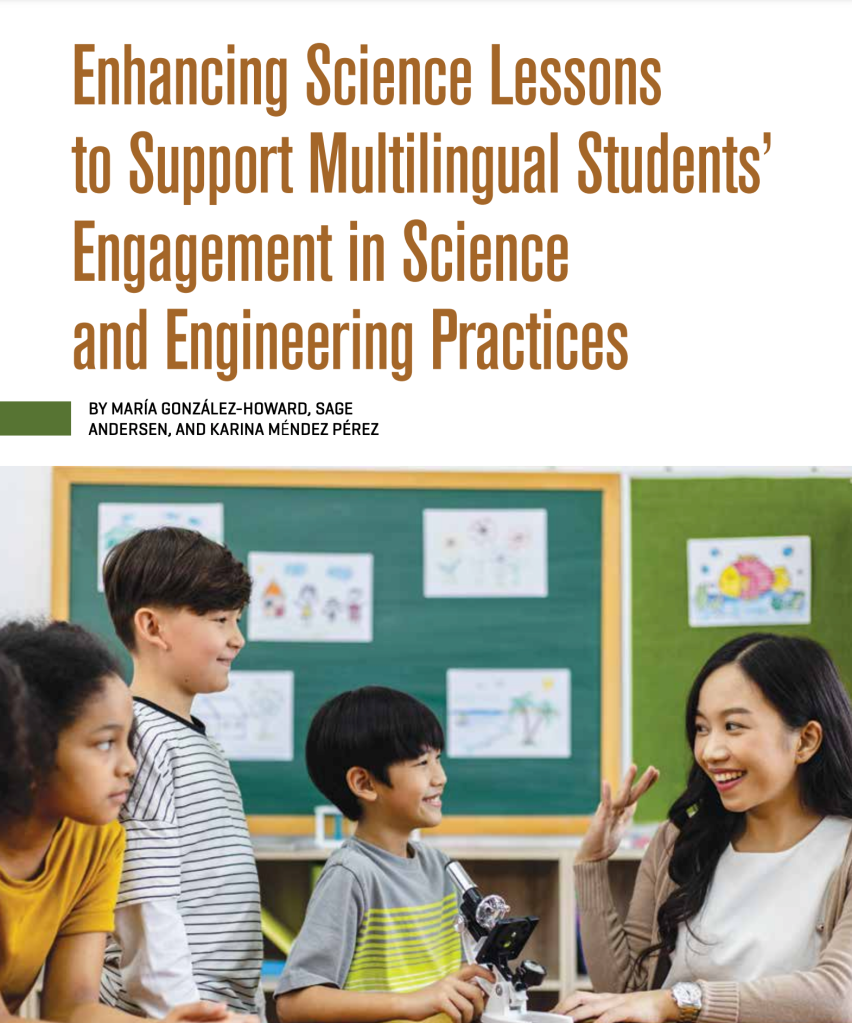
I’ve been collaborating with several science teachers on ways to support multilingual students in the science classroom. In a recent workshop we examined the NSTA Science Scope article Enhancing Science Lessons to Support Multilingual Students’ Engagement in Science & Engineering Practices by Maria Gonzalez-Howard, Sage Andersen, & Karina Mendez Perez. We found the article to be very helpful and the text provides strategies for science teachers to create an inclusive classroom environment that supports multilingual students’ sensemaking. The article suggests using the 5E instructional model (Engage, Explore, Explain, Elaborate, and Evaluate) and provides specific strategies for each phase of the model (I really appreciated how this was organized). The strategies include providing opportunities for small-group talk before whole-class discussions, highlighting cognates in science, and allowing students to use both content-specific and everyday registers to express their ideas. There is an emphasis on the importance of teachers understanding why and how a certain strategy is helpful to meaningfully apply the strategy to their own instruction in different contexts. At the end of the day, the authors aim to help science teachers create a classroom environment that supports multilingual students’ sensemaking and improve their learning experiences. I highly recommend checking out this article.


Leave a comment